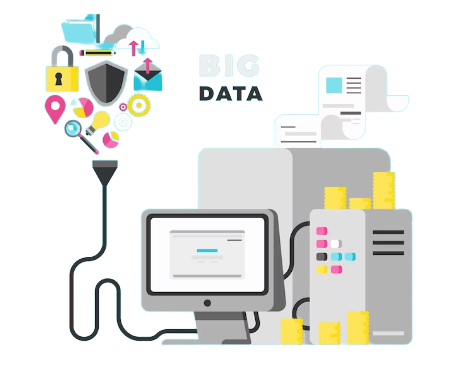Harnessing the power of big data is becoming increasingly important for organizations to gain a competitive advantage in today’s data-driven world. By understanding big data, embracing best practices for data governance, analytics, and infrastructure, and addressing challenges effectively, businesses can unlock valuable insights and make data-informed decisions.
In today’s data-driven world, organizations are increasingly recognizing the value of big data and the insights it can provide. Big data refers to large and complex datasets that can be analyzed to reveal patterns, trends, and associations, enabling businesses to make informed decisions and gain a competitive edge. In this blog post, we will explore the power of big data, its benefits, best practices for harnessing its potential, and future trends in the field.
Understanding Big Data and Its Impact
- Defining Big Data:
Big data is characterized by the 3Vs – volume, velocity, and variety. It encompasses large volumes of structured and unstructured data that can be analyzed for valuable insights.
power of big data - The Impact of Big Data:
Big data is transforming industries and driving innovation. It empowers businesses to make data-driven decisions, optimize operations, enhance customer experiences, and fuel research and development.
The Benefits of Harnessing Big Data
- Actionable Insights:
Big data analysis uncovers valuable insights that help businesses understand customer behavior, market trends, and competitive landscapes, enabling them to make strategic decisions. - Enhanced Customer Understanding:
Big data enables businesses to gain a deeper understanding of their customers’ needs, preferences, and behaviors, facilitating personalized experiences and targeted marketing campaigns. - Improved Operational Efficiency:
By analyzing big data, businesses can identify bottlenecks, optimize processes, and improve overall operational efficiency, resulting in cost savings and increased productivity.
Best Practices for Harnessing Big Data
- Data Governance:
Establishing robust data governance practices ensures data quality, privacy, and security throughout the data lifecycle. - Data Collection and Storage:
Effective data collection and storage strategies involve capturing relevant data from various sources, storing it in scalable and secure repositories, and ensuring data accessibility. - Data Integration:
Integrating diverse data sources, including internal and external data, provides a holistic view and enables comprehensive analysis. - Data Analytics:
Advanced analytics techniques, such as machine learning and predictive modeling, help derive meaningful insights and uncover patterns and trends in big data. - Scalable Infrastructure:
Investing in scalable infrastructure, including cloud-based solutions and distributed computing, supports the processing and storage requirements of big data analytics. - Collaboration and Cross-Functional Teams:
Collaboration between data scientists, analysts, and domain experts fosters a multidisciplinary approach, ensuring a comprehensive understanding of data and its implications. - Continuous Learning and Adaptation:
Continuous learning, experimentation, and adaptation are essential to keep pace with the evolving field of big data analytics and drive innovation.
Overcoming Challenges in Big Data Analytics
- Data Quality and Integrity:
Ensuring data quality and integrity is crucial for reliable analysis and decision-making. Implementing data cleansing and validation processes helps address data inconsistencies and inaccuracies. - Data Privacy and Security:
Protecting sensitive information and complying with data privacy regulations are paramount in maintaining data security and earning customer trust. - Skill Gap and Talent Shortage:
The shortage of skilled data scientists and analysts poses a challenge. Organizations can bridge this gap through training programs, partnerships, and collaborations. - Scalability and Infrastructure Constraints:
Scaling infrastructure to handle the growing demands of big data analytics requires careful planning and investment in scalable technologies and architectures.
Future Trends in Big Data Analytics
- Artificial Intelligence and Machine Learning:
AI and ML technologies are revolutionizing big data analytics by automating processes, improving accuracy, and enabling more sophisticated insights. - Real-Time Analytics:
Real-time analytics enables immediate insights and actionable intelligence, enabling organizations to respond quickly to changing market conditions and customer needs. - Edge Computing:
Edge computing brings data processing and analytics closer to the data source, reducing latency and enabling real-time decision-making in IoT and edge computing environments.
Conclusion
Harnessing the power of big data is becoming increasingly important for organizations to gain a competitive advantage in today’s data-driven world. By understanding the power of big data, embracing best practices for data governance, analytics, and infrastructure, and addressing challenges effectively, businesses can unlock valuable insights and make data-informed decisions. As big data analytics continues to evolve, organizations must stay agile, embrace emerging technologies, and prioritize continuous learning to harness the full potential of big data and stay ahead in the market.
Unlock valuable insights and gain a competitive edge with Tanbits big data services. Our expertise in data governance, analytics, and infrastructure empowers organizations to harness the full potential of big data. By implementing best practices and addressing challenges head-on, businesses can make data-informed decisions and drive success in the data-driven landscape.











